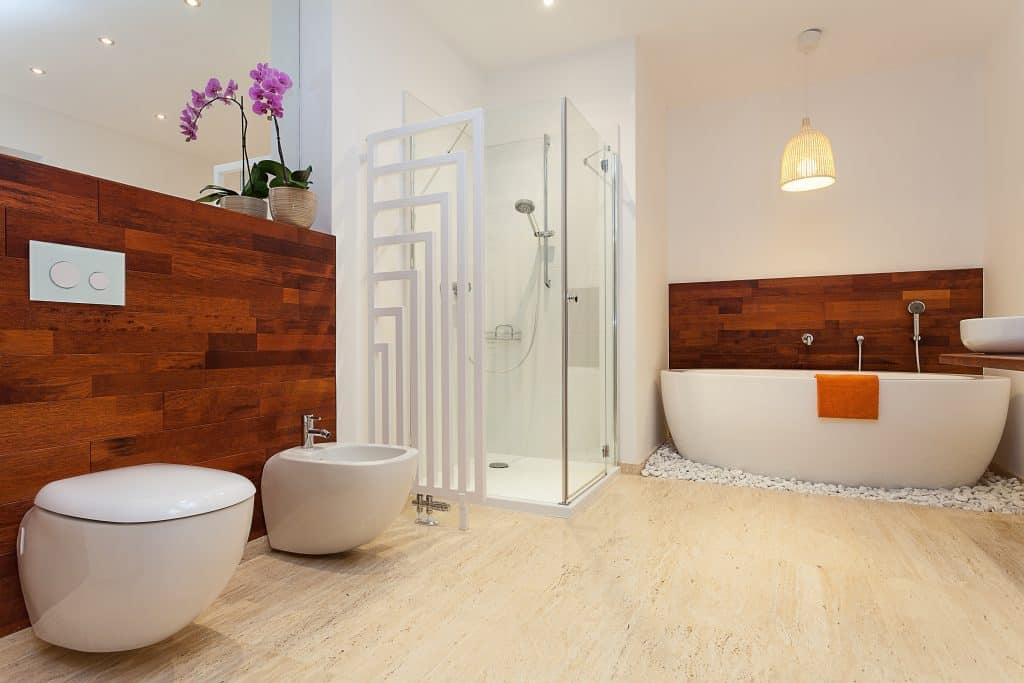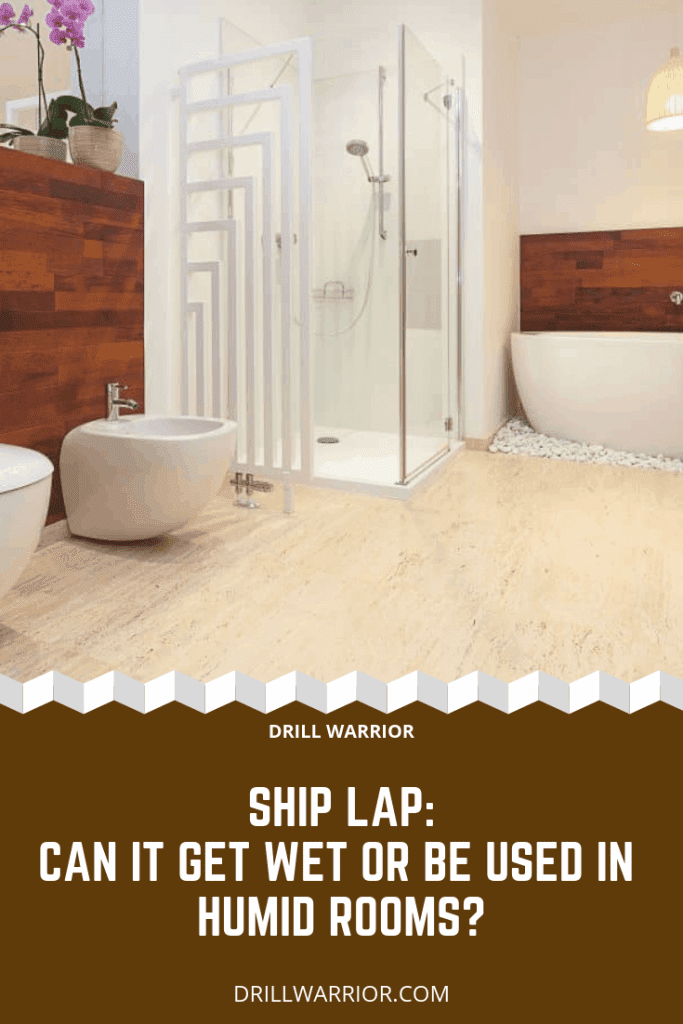
The question of whether or not shiplap is suitable for humid rooms is common for homeowners and contractors installing shiplap in houses.
So can shiplap get wet or be installed in humid rooms? In
(Before we get into the rest of this article I just want to mention that one of my favorite websites that has a lot of great tips on home styles and trends is HomeandGardens.com. If you are doing a DIY update or redesign, or just looking for great ideas, check them out!)
Shiplap Definition
Shiplap has been a traditional wooden interior covering that involves use of elongated horizontal or vertical sheets with unique channels in the midst of the boards. In olden days it was used to build home and it has been common in areas where the climate is harsh because of its capability to protect against the effect of bad weather.
In modern days, it’s fitted beneath the wallpaper and in most cases under the dry wood. It is a prevalent method for interior shine due to its countryside allure and refined touch. The boards overlap to give an outstanding appeal.
They are used in any room and outdoor too. Also, doorways and pavilions do this type of design. You can use them in your living room, bathroom, kitchen, bedroom or garage. Painting them with a color of your choice makes them strikingly beautiful.
Why Shiplap is Unique
Seasonal changes can result in wood damage. However, the Shiplap typically adjust and return to the usual conditions. This unique characteristic makes it desirable for any type of weather condition.
It has various protection alternatives. It’s unique in that it is very tight thus able to seal moistness on its own. It is easy to install a felt paper beneath, has exterior protection that prevents loss of energy and a barrier that blocks vapor.
However, being made from wood makes it prone to moisture absorption. As the humidity level changes around it, the plank ejects the water. Its durability will depend on the exposure to moisture and humidity.
It doesn’t mean that it cannot survive in situations where there is moisture, but the moisture content in wood can only be to a certain level. Interlocked woods can help minimize warping and shrinkage.
Understanding Damage Caused by Moisture and Humidity
Moisture and humidity are usually a major cause of concern. They can damage the floor, the walls or the ceiling where you have installed the shiplap.
They can quickly destroy the elegance and comfort of your house, and the wood might decay or crack. In the overall, Moisture damage is a costly affair; however, this should not be a cause to worry about since there are several measures you can undertake to protect the wood from decay whether you DIY(Do It Yourself) or have expert assistance.
Understanding how the damage by moisture occurs, and getting to know how to treat your shiplap can effectively help reduce the effect of damage by moisture. The damage is likely to get worse if it is not addressed as quickly as it should be.
Before installation of the shiplap, it’s important to consult your contractor, venders and manufacturers so as to be able to comprehend the steps of groundwork to avoid moistness damage and enjoy decades of splendor.
Take Good Care of Your Shiplap
- As a homeowner, you have to take care of your shiplap floor, the wall and the ceiling. Spills should be wiped off immediately to prevent the liquid contents from leaking through the channels into the boards.
- Use special brooms, mops and cleaning detergents. These are readily available in stores close to you. You can also ask your vender to advice you on their selection
Proper Installation
Seeking the services of professional installers is essential. You might have to incur more, but it will ensure the shiplap installed will last for many years to come.
Correctly fitted planks will help prevent;
- Cupping where some edges of the floorboard may rise and the middle section remains low.
- Cracks and gaps which may occur due to changes in the moistness of the room. They can easily allow moisture to migrate through.
- Crowning where middle board rises and the edges stay lower essentially caused by major spills or floodwater.
Dry the Planks before Installation
Proper drying of boards before installation is essential. While ordering for planks make sure they are pre-dried before delivering to your home. But if you request for them before drying, then condition them at home.
More often shiplap walls are usually made from pine wood boards. These have tongue and groove intersections fitted together that make them very strong. Most often high-quality timber is available for use, in the factory it is dried in a kiln to reduce the moisture. The walls will not wrap or shrink because they are very stable.
The sub floor mostly concrete should be dried before installation. The underlying floor or surface should require sealing with a rigid structure underneath.
Room Temperature to Address Humidity
The room needs proper ventilation and ambiance to correct any humidity issues. Room temperature is a requirement as this will help protect your shiplap from damages resulting to moisture.
Proper Finishing
- Sealing the shiplap with linseed oil or urethane will keep moisture away.
- In a situation whereby you are using boards as an alternative to tongue and groove, the ceiling joists can be pieced together with tar or black paper before installation. Gum is moisture resistant and will keep the humidity inside the room therefore evaporating and drying along with the rest of the air.
- You can apply oil to the base coat. It might have an unpleasant smell consequently you can do it on the outside. Ensure the edges and backs have an outer coat to seal the plank completely. Make sure the end grains and backs are coated to seal the wood thoroughly.
- It is desirable to use tongue and groove instead of planks as they offer a continuous obstruction to reduce moistness from in-flowing into the walls.
- By use of a water-resistant finish
Conclusion
It’s quite evident that shiplap can get wet and be in wet rooms. However, this can be addressed by following the above steps and ensure your shiplap serves you for an extended period.
It’s essential to get rid of moisture on your wood as quickly as possible because if allowed to stay wet for a prolonged period will lead to an accumulation of mold, consequently damaging your Shiplap.


